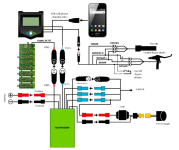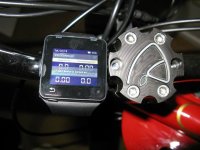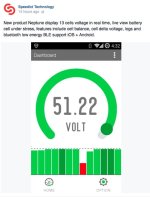bikingdutchman said:Question about the Speedict Mercury.
I have a (chopper) bike with a 36 V- 350 Watt brushed DC motor (Angel brand).
Sadly these bike is not road legal in the Netherlands, it has no PAS sensor, only a throttle (variable resistor twist grip).
The controller has a main current input and also the 3 wires from throttle, and 2 leads out... I think this controller is a PWM type, only chopping the main current to the brushed DC motor.
I want to make the bike road legal by using a PAS sensor and a Speedict Mercury, using the road-legal 2 layout.
To me it seems no difference to the Mercury wether it works for a brushed or brushless DC motor.
Are there any forumreaders who have experience with this ?
Thanks for your comment in advance.
one thing you need to make sure that your brushed speed controller's throttle input signal type since speedict mercury's output is dc signal up to ~ 5v to simulate market twist grip throttle device, and i think your brushed controller work like that as it is normal and easy connect to outside world ... then you can connect twist grip throttle (hall type, output up to 5v) to speedict mercury's port 2, and PAS sensor (up to 10 magnet, sadly speedict setting allow up to this member but i think they can easy to change program to allow more than that) to port 3, output to port 4 !
use function mode ROAD LEGAL 2, you are able to limit throttle up to 6km without PAS is detected and top speed to 25km/h, good luck






